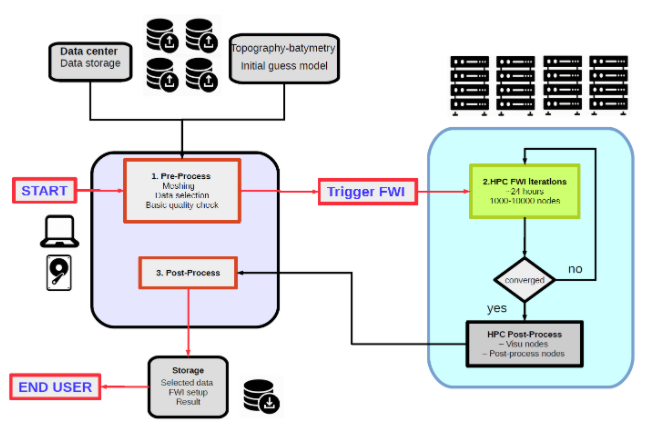The seismic tomography workflow can be seen as 3 main steps :
Step 1 consists of selecting, downloading, and preparing the data as well as the model and different inputs required for step 2. We rely on ObsPy (https://docs.obspy.org/) and LASIF python packages for seismological data processing. We have updated LASIF for both SALVUS and SPECFEM3D support and added new tools to help the user for selecting data and build input files for the computation in HPC systems. In addition, we developed a python package, PySpecfem ,that helps to manage all SPECFEM3D input files and directory structure using a unique configuration file.
Step 2 is the main tomographic iterations launched in HPC systems and requires a high computing capability. We have optimized SALVUS and SPECFEM3D for those systems. In addition, we have developed within the ChESSE project a new SPECFEM3D branch for gradient computation and models update, SPCEFEM3D_FWI.
Step 3 comes after the main iterations have converged towards a model that fits the data. This consists of visualizing the models obtained, storing the synthetics and data used, as well as performing quality control.
This general tomographic workflow was adapted for SPECFEM3D_FWI and SALVUS. |

